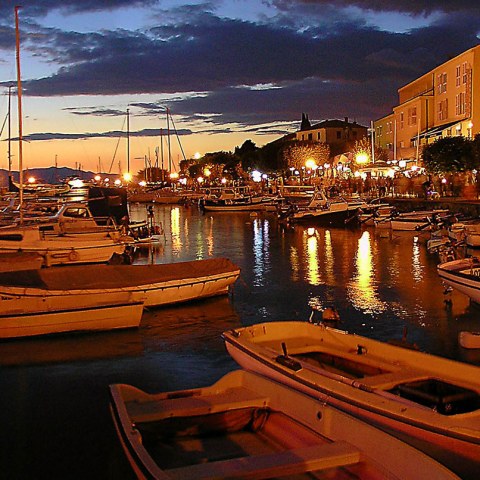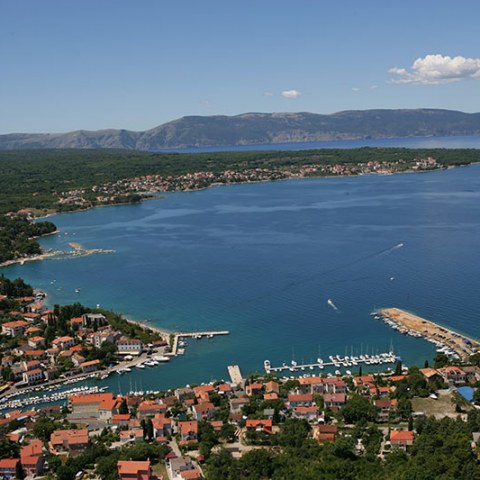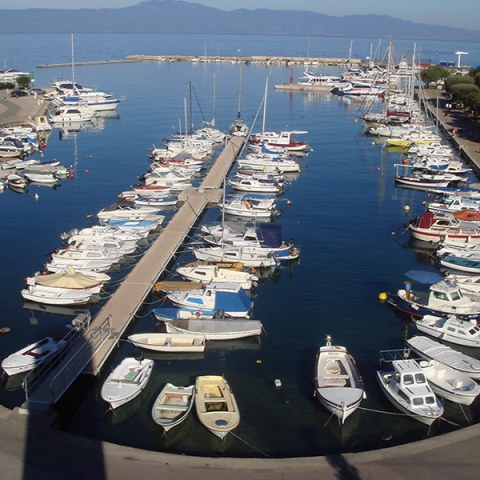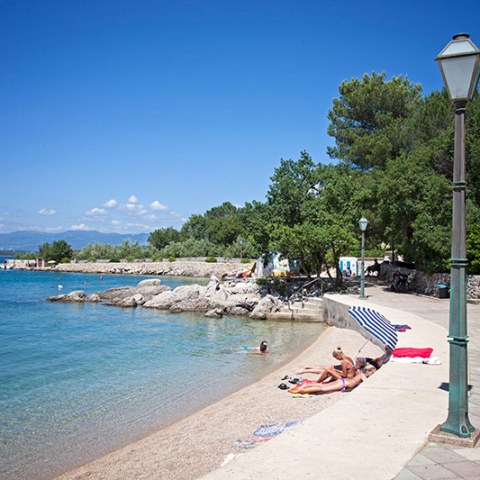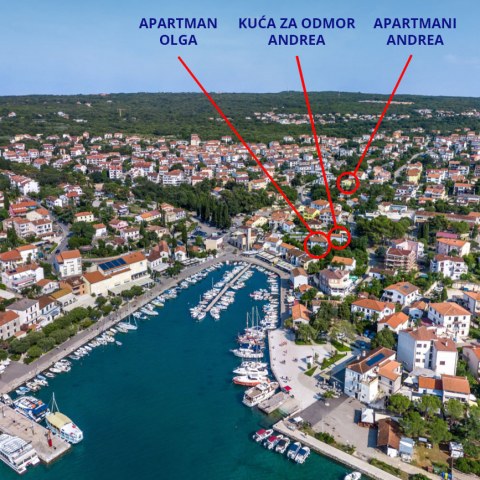Malinska, a place on the island of Krk that did not have a settlement center. The whole area is called Dubašnica in the western part of the island of Krk. It is also the only Krk area that we know exactly when it was inhabited.
Until the 15th century Dubašnica was almost without permanent residents, as well as the southern area, almost to the town of Krk. The name of the area comes from an oak, because there are rich forests and pastures with some arable land. Dubašnica was mostly an Omišalj area, as early as the 12th century, but part of it was also held by the people of Krk.
Malinska, as the center of Dubašnica, once an island port used for the export of wood, and a favorite tourist destination of the Viennese aristocracy. It is mentioned in the 15th century as a good anchorage where ships took shelter during strong winds, especially the scirocco. With the arrival of the steamboat in 1866, Malinska was not only a port for the export of wood, but became a climatic health resort thanks to the mild climate with about 260 sunny days a year. Today it is one of the most visited island tourist destinations, known for its numerous beaches and developed hotel industry, as well as family tourism.
Early Christian church complex in the forest “Cickini” in Malinska
The early Christian church complex is located in the Cickini forest, next to Sveti Vid Miholjica in the Malinska-Dubašnica municipality. It covers an area of about 5,000 square meters. According to expert estimates, it dates from the period between the 5th and 7th century. Within this complex there is a church, the remains of several buildings, and the baptismal well stands out. The research of this complex, which hides the secrets of the past, began in 2002.
During the research, numerous remains were discovered, such as the 5th century Capitel girder beam from the partition wall, a part of the altar partition wall from the 6th century, as well as numerous other excavated objects that have been expertly preserved.
Not far from Malinska is Porat, a quiet place where the population once lived from fishing, and today from tourism, which has taken a leading role. The name of the place comes from the Italian word porto which means port.
In Porto there is a monastery of Franciscans Glagolitic monks of the third order. Within the monastery there is a museum with a sacral collection and valuable exhibits, testimonies of folk life and customs of this area.
Next to the already mentioned monastery is the church of St. Mary Magdalene.
